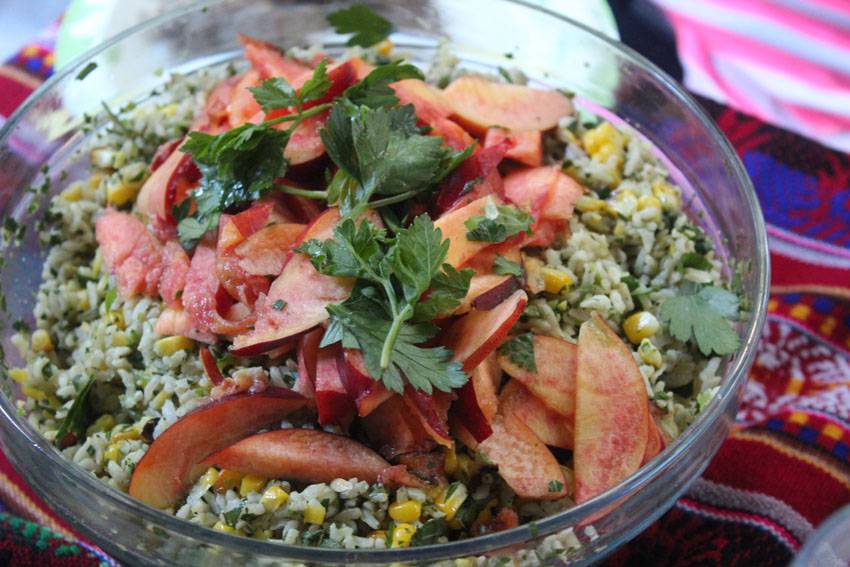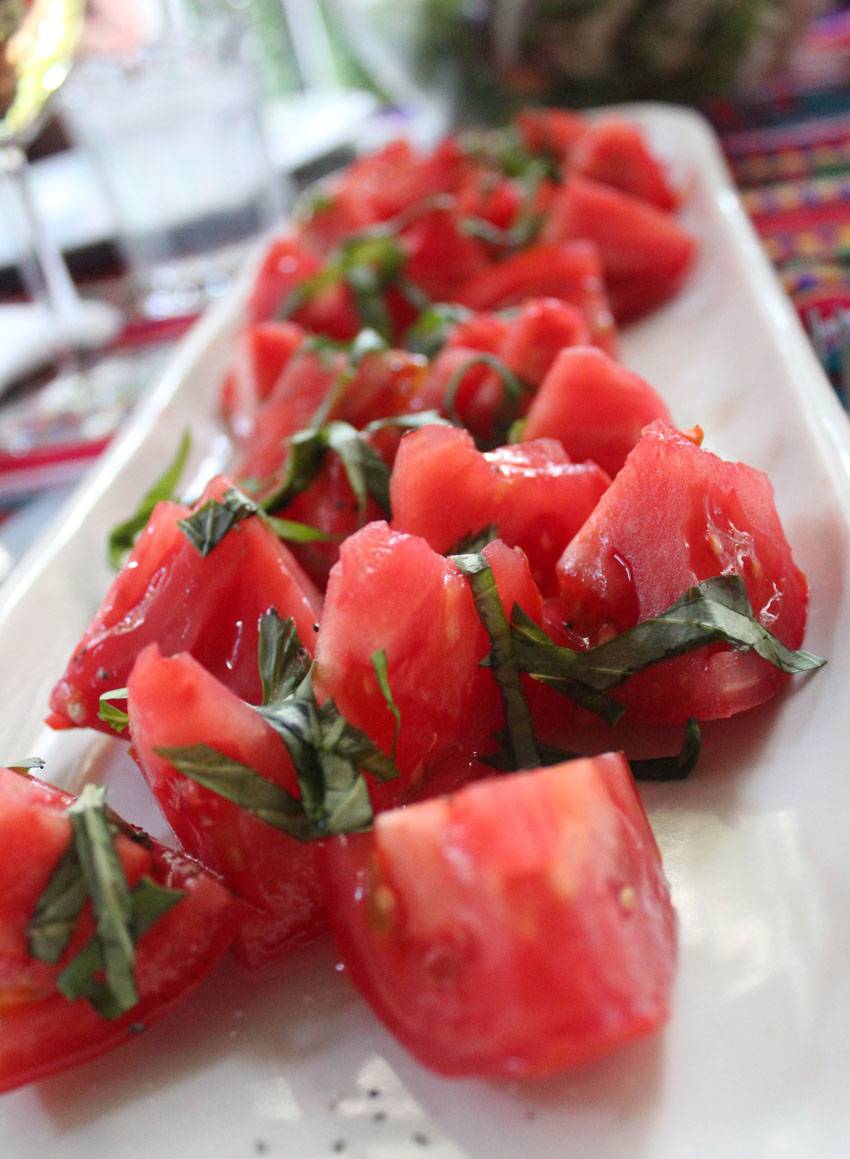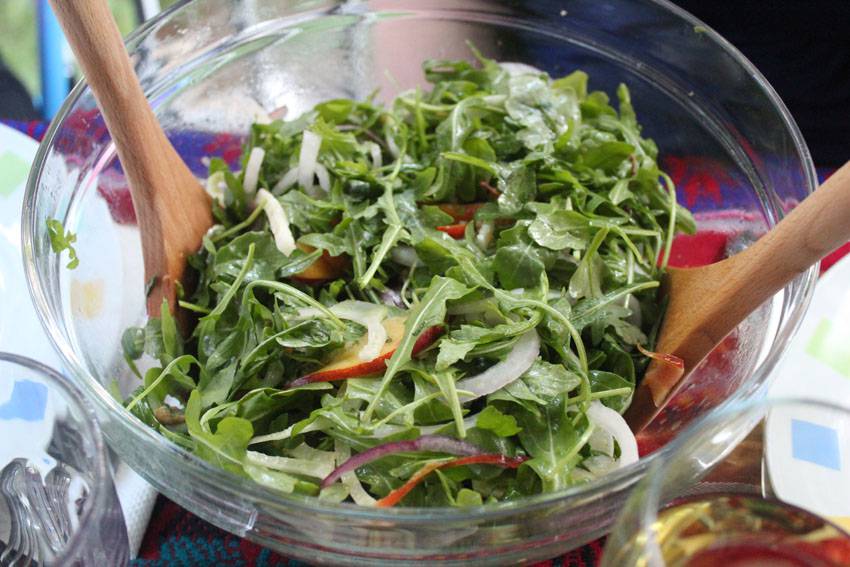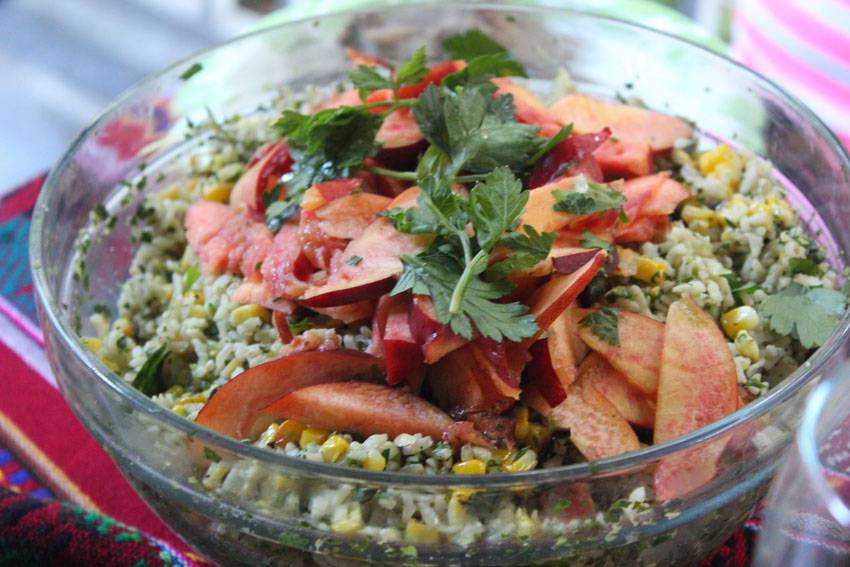This was my first Kosher meal! Going to college in New York I became friends with a lot of people who culturally or religiously identify as Jewish. Together we’ve cooked and shared many meals, but I’ve never been able to feed a few who strictly conform to the regulations of kashrut, Jewish dietary law. As an outsider, the rules can be an obstacle to understanding the culture. (That’s somewhat intentional – Judaism is not an evangelical religion as they do not seek to convert.) Now, after researching, cooking and learning alongside a friend in her lovely kitchen, I have a much deeper understanding of the daily experience of so many. Here’s what I’ve learned so far:
1. There is no one Kosher
In other words, people of Jewish religion and culture have lots of different orthodoxies and the adherence to or interpretation of Jewish dietary law is different from person to person. Figuring out all of the complexities with an individual’s identity can make for great conversation. Ask before you cook together and ask again with the next friend.
2. There are unclean animals
It’s pretty well known that consumption of pork is forbidden by Jewish law. The Torah states that an animal must chew the cud and have a cloven hoof to be clean while anything in the waters must have both fins and scales. Sorry, no shellfish or catfish on a kosher menu but beef, lamb, and most fish are fair game. There’s an interesting discussion about the subtle differences between Kosher and Halal in Marvin Harris’s Good to Eat that points to how Islam’s lack of restriction against camel helped the religion to travel across Saharan Africa as camel could be eaten in desperation along the desert journey. It’s a bit irreligious, but I recommend the read for those interested in anthropology.
3. No Milk with Meat
So no cheeseburgers or chicken parm. But also, all of the utensils used to prepare, clean, or store Kosher foods need to be divided between those used with dairy and those used with meat. This is why many Jewish households keep two sets of flatware, pots and pans. Also, this is why you will see Kosher friends bringing their own flatware or receiving sealed flatware from caterers. I have at least one friend who just finds it easier to be vegetarian throughout life.

Fish is pareve, meaning neutral, so it can be served with either milk or meat.
4. Fish is Neutral
There are many pareve, or neutral, foods that can be eaten with either milk or meat. These include fish, eggs, fruits, vegetables, grains, water, salt, etc. I was still intimidated by the no-milk-with-meat rule so I made the entire meal with friends pareve by leaving out the cheese from the two salad recipes. Most healthy things seem to fall in this zone so go crazy with pareve!

We left the cheese off of both salads to make everything pareve. Also, because I didn’t understand how to buy kosher cheese and was aimless for the first time ever in my favorite cheese section.
5. Packaged Foods Need the Symbol
All packaged foods that you buy for a Kosher meal need to have a hechsher, a symbol representing the rabbinical certification that the food meets religious standards. Unprocessed fruits, vegetables and grains are fair game. That’s just another way that staying away from boxes makes life a bit easier.

The hechsher is easy to spot on packaged products. Many foods will bear this symbol even if they aren’t marketed just for Jewish consumers. Check your pantry and you’ll probably spot a few.

Yes, staying away from boxes always makes life easier.
Adhering to those five rules, my friends and I made a delicious feast with this menu:
Pickled Peach and Fennel Salad
Green Rice Salad with Nectarines and Corn from Vibrant Food
Baked Cod with Fennel Seeds
Those kosher plates at weddings, special grocery counters, and season 3 of Orange is the New Black are all now demystified. And now it’s time to reconnect with an old friend and help prepare a meal for Shabbat.

Local, seasonal tomatoes are perfect with a little salt, pepper, olive oil and fresh basil.

My friends taught me that glass dishware can be used with either milk and meat-based dishes and can help cut down on the requirement for two sets of everything in the kitchen.

The laws of kashrut may be strict, but people are fluid. Ask your friends what their requirements are and ask again with the next friends.


Leave a Reply